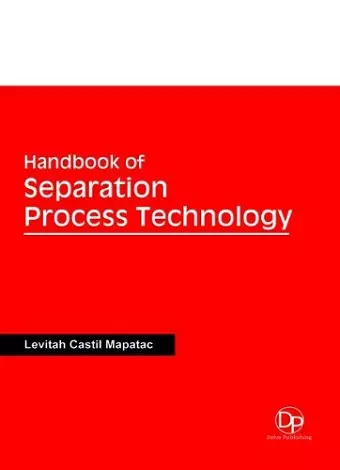Handbook of Separation Process Technology
Format:Hardback
Publisher:Delve Publishing
Published:30th Nov '16
Should be back in stock very soon

A separation process is a method to achieve any phenomenon that converts a mixture of chemical substance into two or more distinct product mixtures, which may be referred to as mixture, at least one of which is enriched in one or more of the mixture’s constituents. In some cases, a separation may fully divide the mixture into its pure constituents. Separations differ in chemical properties or physical properties such as size, shape, mass, density, or chemical affinity, between the constituents of a mixture. They are often classified according to the particular differences they use to achieve separation. Usually there is only physical movement and no substantial chemical modification. If no single difference can be used to accomplish a desired separation, multiple operations will often be performed in combination to achieve the desired end. Separation processes are essential to the chemical, petroleum refining, and materials processing industries. The word “separation,” however, refers to different processes and functions for different industries. Separation processes comprise a large portion of the activity in the chemical and petrochemical industries. In the forest products industry, separation ranges from separating wood chips of different sizes to converting black liquor for reuse. In the aluminum and steel industries, as well as the metal casting and glass industries, the most important area of separation technology is separation of different types of scrap, sand, and cullet. Finding common ground among these definitions of separation processes or technologies is a difficult task. Separation processes can be thought of in general terms as performing similar functions in all industries. This Text presents a comprehensive introduction of historically important separation processes such as distillation, absorption, extraction, leaching, and crystallization and considers these techniques in light of recent developments affecting them.
ISBN: 9781680957303
Dimensions: unknown
Weight: unknown
244 pages